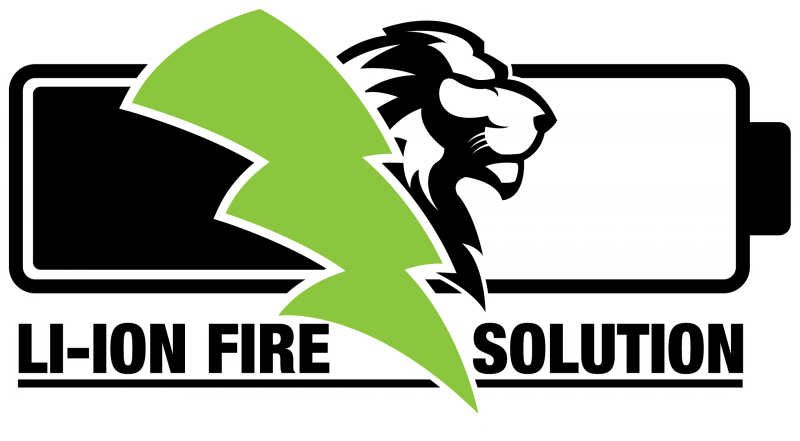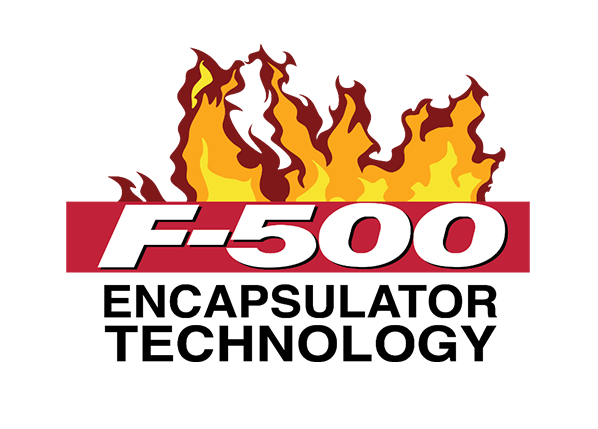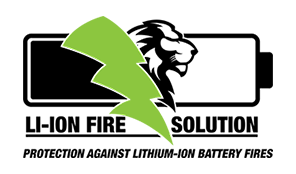
Since 2019, Lithium-Ion Fire Protection, in conjunction with our partners, have been developing solutions for the emerging challenges associated with Lithium-Ion Battery fires.

What is the difference between Lithium and Lithium-Ion batteries?
The biggest difference between Lithium batteries and Lithium-Ion batteries is that Lithium batteries feature a single cell construction, meaning that they are single-use and cannot be recharged once empty. On the other hand, Lithium-ion batteries can be used time after time, they are rechargeable and can be charged and emptied hundreds of times; hence why they are so popular.
Although Lithium-ion batteries might seem much better, especially from a waste point of view, there are still some properties that make Lithium batteries incredibly useful. They have a much higher energy density than lithium-ion batteries, meaning they hold more charge in comparison to their size. Lithium batteries can provide power from a single charge, even if it’s the only charge they’ll ever have. Unfortunately, there is no safe or effective way to recharge Lithium batteries, which is why Lithium-ion batteries were invented in the first place. Additionally, Lithium batteries are cheaper and easier to manufacture, and don’t degrade as quickly as a Lithium-Ion battery, making them a suitable choice in products such as smoke alarms, watches, pacemakers, calculators to name a few.
Ultimately, both Lithium and Lithium-Ion batteries pack a lot of punch for their size, comparatively against other battery types, making them an incredibly popular option in a huge array of uses. And even more so where products need to be recharged frequently, such as phones, laptops, power backups, vehicles, boats, solar storage systems, industrial equipment, power tools, e-scooters and e-bikes, and so much more.
What products commonly contain lithium-ion batteries?
Lithium-Ion batteries are widely used in electronic devices, including Tablets, Mobile Phones, Laptops, Power Tools, Electric/Hybrid Vehicles, Caravans/Motorhomes, Marine Vessels, Emergency Lights, Public Transport, Mining Vehicles & Solar System Batteries, etc.
Lithium-Ion Batteries; why do they catch fire?
Referencing Fire + Rescue NSWYs website (https://www.fire.nsw.gov.au/page.php?id=9389): “Lithium-ion batteries are highly energy-dense and contain electrolytes that are highly flammable. There are several situations that can lead to lithium-ion batteries catching fire, including:
- Overcharging or use of non-compliant charging equipment
- Overheating or exposure to heat or extreme temperatures
- Physical abuse (e.g. dropping, crushing, piercing, and/or vibrations)
- Short-circuiting, battery cell malfunctions or system faults
- Defects or contamination introduced during manufacture
When lithium-ion batteries fail they can undergo thermal runaway. This involves violent bursting of one or multiple battery cells, hissing and release of toxic, flammable and explosive gases, and an intense, self-sustaining fire that can be difficult to extinguish.”
The Fire extinguisher has an A rating and is suitable for use on Lithium-ion battery Fires?
Our 4L and 9L fire extinguishers have been certified by Global Mark, who are a JAS-ANZ accredited certifying body. The FB4LF-500 model has achieved a 2A rating as per AS1850.
The FB9LF-500 model has achieved a 3A rating as per AS1850.
These extinguishers have been certified and tests conducted have been witnessed by Global Mark, one of the largest certification bodies in the world. Approval certificates are attached.
Do Li-Ion Fire F-500EA Extinguishers hold an ActivFire certificate?
Our 4L & 9L Li-Ion Fire Solution F-500EA extinguishers are now ActivFire listed as a water-type extinguisher only.
Does the Li-Ion Fire F-500EA Extinguisher range contain PFAS or other toxins?
The Li-Ion Fire F-500EA Solution is fluorine free, non-corrosive, non-toxic, non-hazardous, and fully biodegradable. The TOFA test report has been attached, which details the clean nature of F-500EA. We have developed a Safety Data Sheet (SDS) which can be downloaded at: https://www.lithium-ionfireprotection.com.au/documentations/
Do the Li-Ion Fire F-500EA Extinguishers comply with Australian standards?
- Currently there is no Australian Standard for Lithium-Ion battery fires, however, our 4L and 9L F-500EA fire extinguishers meet the Australian Standard AS/NZS1841.2 – 2007 (current mandatory Australian Standard for Water-type fire extinguishers). Please find the Global Mark certificate here.
- Our fire extinguishers have been tested to Class A as per the requirements of AS1850 Standard. Our 4L Extinguisher has been tested on a 2.4kWh Li-ion battery fire which has an A rating, our 9L Lithium-Ion Fire Extinguisher has been tested on a 4.8KWh which has an A rating. Both are suitable for use on Lithium-Ion batteries fires. They also perform extraordinarily well on combustible materials that output extremely high temperatures.
- We have conducted multiple tests on Lithium-Ion battery fires, which Global Mark have witnessed. Our 4L F-500EA fire extinguisher has successfully extinguished 2.4kWh li-ion battery fires, without reignition. Our 9L F-500EA fire extinguisher has successfully extinguished 4.8Wh li-ion battery fires, without reignition.
- F-500EA solution has been tested extensively by independent, third-party testing organisations, including Kiwa, Dekra, Daimler, Dutech, Bosch, Fraunhofer University and TU Clausthal. This testing has been controlled, scientific and highly instrumented, documenting fire suppression, control and elimination of thermal runaway and encapsulation of both flammable electrolyte and other explosive off-gases, rendering them nonexplosive. Encapsulator Technology reduces the toxicity of HF gas exposure to humans.
- F-500EA solution is UL Listed for use on Class A.
- Encapsulator Agent is listed in the new NFPA 18A standard Section 7.7 and Annex 4.3.
Can I use an ABE Extinguisher on a Lithium-Ion battery fire?
You can use an ABE Extinguisher on a Lithium-Ion battery fire. It will help control the spread of the fire to other fuel sources nearby, but it will fail to stop reignition and thermal runaway. Please see below video which compares the performance of ABE vs Foam vs F-500EA on a Lithium-Ion battery fire.
Lithium Ion Battery Fire Testing
How does F-500EA work differently to an ABE Extinguisher on Lithium-ion battery fires?
Lithium-ion batteries burn at an extremely high temperature. The key to stopping a lithium-ion battery fire is to quickly remove the heat and stop the reaction of the electrode material with other components of the battery. F-500EA provides a perfect solution for both of those scenarios. Most foam or powder type fire extinguishers only work for “2D fires”, which can only be applied to a flat surface as the extinguishant has no ability to adhere to vertical or other angular surfaces. The F-500 EA agent can penetrate inside the structure of a battery, thus being able to successfully extinguish this type of fire.
Encapsulator Agent - How it works
Why would I choose the F-500EA Extinguisher over other types of fire extinguishers?
The advantages of using the F-500EA fire extinguisher vs other fire extinguishers are listed below:
- Rapid Cooling
- Interrupts Free Radical Chain Reaction
- Drastic Toxin & Smoke Reduction
- No Fluorinated Ingredients (PFOA/PFAS)
- 3D fires
- Enhanced Burn Back Resistance
Are there any products in the Li-Ion fire range to cover larger risks?
- 45L & 90L F-500EA wheeled type fire extinguishers,
- TKO (Total Knock Out) nozzles
- Inductors for Lay flat hose
- Fire hydrant set ups.
- Fire hose reel set ups
- Fire Suppression systems
Is the Li-Ion Fire F-500EA Extinguisher range compliant in New Zealand?
Referencing Global Mark Certificate, both 4L and 9L Li-Ion Fire F-500EA Extinguishers are approved for use in Australia and New Zealand as per AS/NZS 1841.2:2007. Both of these extinguishers have a relevant FERN number for the New Zealand Market.
Global Mark is accredited in both Australia and New Zealand
Are there any precautions one should take when using a Li-Ion Fire F-500EA Extinguisher?
- Li-Ion Fire F-500EA fire extinguisher can be used on Class A fires as well as small Lithium-Ion battery fires. Do Not discharge it onto an electrical system.
Being a water-type extinguisher, you should only use this product when there is a fire. Do not point it directly at an active AC Power source, such as switchboards. If the fire is located on an electrical source such as previously described, then a DCP or CO2 extinguisher is best. Whilst a Lithium-Ion battery holds an electrical charge, our F-500EA is completely safe to use on a battery if not connected to an active charging point. Caution is always to be used with any type of fire extinguisher.
Li-Ion Fire F-500EA fire extinguishers have been tested as per the requirement of EN3-7 standard Clause 9 & Appendix D. They comply with EN3 specifications for use on electrical systems (Up to 1000V, 1m minimum distance).
SGS laboratory had tests conducted whereby a 4L Li-Ion Fire F-500EA Extinguisher was deployed at a metal plate charged with 1000Volts and another test where it was deployed at the same plate charged at 5000Volts. At 1000Volts the current tested back to the operator is only 0.08mA . At 5000Volts, the amps returning back to the user are 0.55-0.61mA, which is under a minimum current human can feel (1mA). The average Volts for an EV are between 400-800 Volts when fully charged depending on vehicle manufacturer.
- Use only manufacturer approved parts and refilling materials. Follow the instruction manual and maintenance requirement.
Li-Ion Fire F-500EA fire extinguishers are specialist firefighting equipment compared with traditional fire extinguishers. Its components and agent are specially designed and manufactured to provide the best performance and highest safety standard.
The use of other parts or recharging materials may impair the efficiency or cause malfunction of the fire extinguishers.
